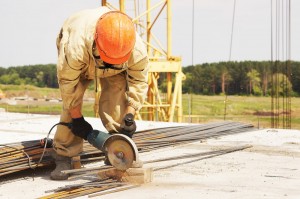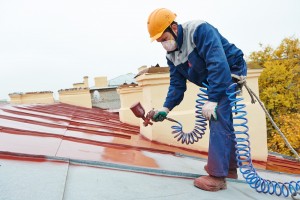DIY construction efforts take quite a bit of effort, but they should never be hurried along at the expense of safety. You would do well to keep that in mind so you can prevent any accidents you may face. You can get things done even without hiring builders, a building team in most cases, such as bathroom and kitchen fitting, wallpapering, tiling and even brick work. Think ahead and use the following tips to get yourself prepared for the building jobs ahead in a productive and safe manner:
• If you use poorly designed tools and equipment of low quality, then chances are things WILL break at some point and you may get hurt in the process, not to mention the long term health hazards that may lead to. Carpal tunnel syndrome, trigger finger, tendonitis, white finger and so forth are something you do not want to deal with.
• You should never carry a tool by its cord or doing so with its hoses. Even though this may seem like a good idea at some point, you would do well to avoid it as much as possible. Keep the cords away from any oil, water, heat and sharp edges to avoid any damage. Look for power tools that have lower vibrations overall and make sure you protect your ears and eyes from harm by using goggles and ear protection.
• You must make sure you have tools that don’t conduct electricity or heat so you can do your job well.
• Make sure you maintain a good posture while you work and use the tools as intended to avoid accidents during your renovation or construction efforts.
• You need to make sure you keep people away from any areas where you operate machines, especially if they have no business there and it poses danger to yourself and them.
• You need to be constantly aware of your surroundings while you work, especially when it comes to low clearance areas, obstructions of all sorts and any obstacles that end up in your path so you won’t trip and hurt yourself or worse. This happens more often than you may think.
• You need to pay even more attention when you’re using scaffoldings, as this is a pretty dangerous place to be when you work, even on the best of days. Make sure its erected on a nice and solid surface and that the scaffolding itself is strong enough with more than sufficient weight capacity, at least four times the weight you believe it will need to take.
• You must never support any scaffoldings or planks on an uneven surface or with uneven objects that simply don’t have a good footing.
• Keep scaffoldings away from any power lines to stay on the safe side during work, especially when you’re alone and you have no other builder present working along you.
• No matter what building service you do, never use a damaged scaffold, regardless of how much in a hurry you are or how small a job you feel you need to do. Make sure you have a good and solid footing on a sturdy scaffold and use the proper guardrails, mid rails and toe boards when you work.
For more building services practical advises click here

